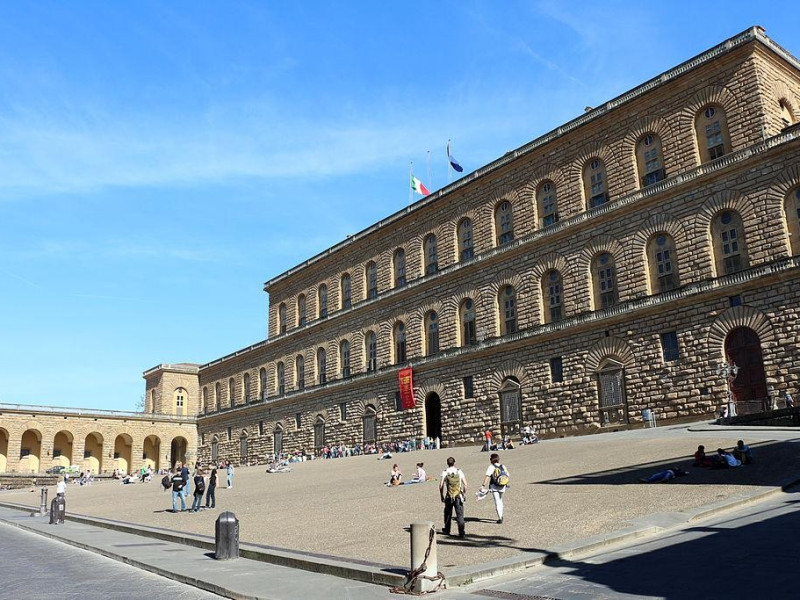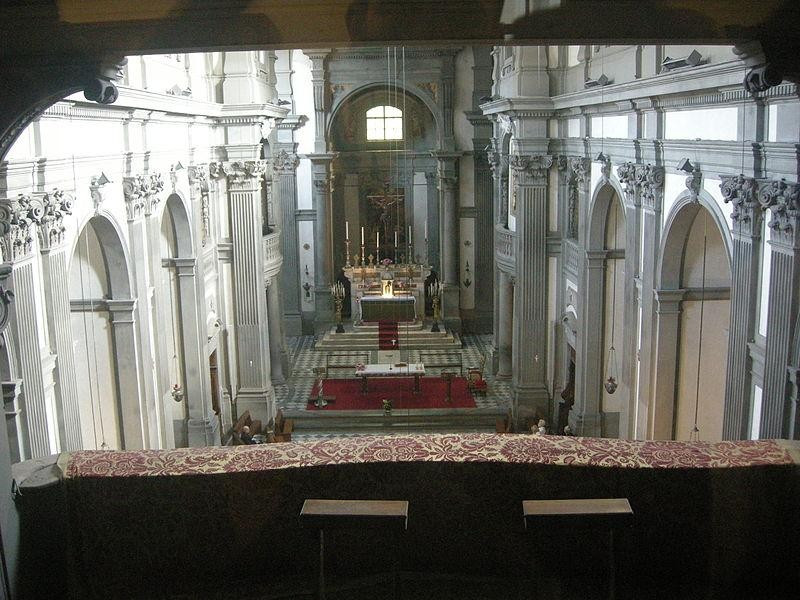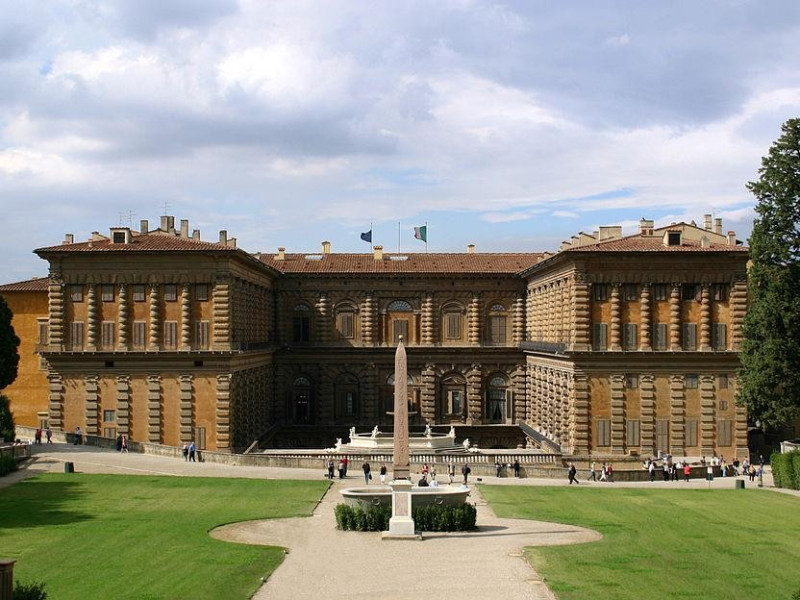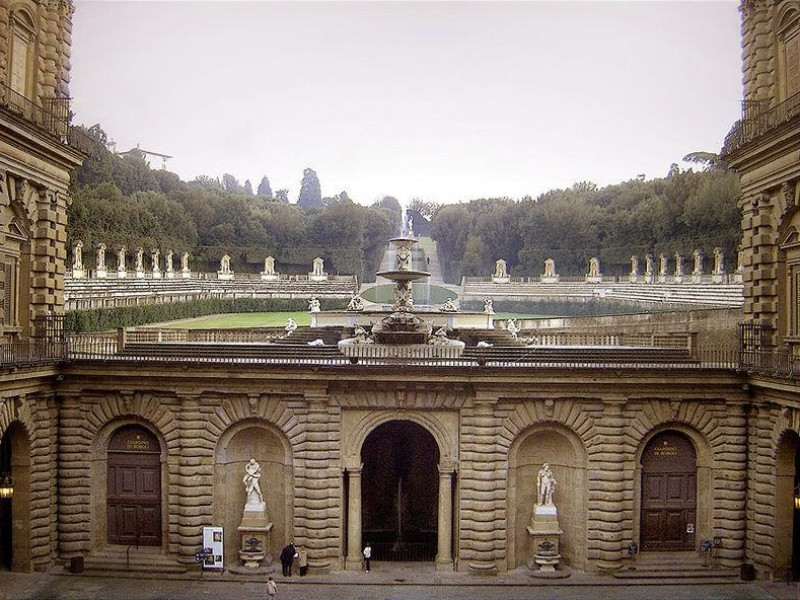Palazzo Pitti
Pitti Palace was the residence of the Grand Duchy of Tuscany, already inhabited by the Medici, the Lorraine and the Savoy. It is located in the homonym square, in the Oltrarno. Inside it houses a museum complex consists of galleries and museums of different nature: the Palatine Gallery (art gallery with masterpieces by Raphael, Titian, etc.), arranged according to the criterion of the eighteenth-century paintings; Monumental Apartments, the Winter Quarter and the Prince of Naples Quarter, the Gallery of Modern Art (with works of macchiaioli) and other specialized museums, such as the Silver Museum, dedicated to applied art, the Gallery of Clothing, the largest museum dedicated to Italian fashion, the Porcelain Museum and the Carriage Museum. The monumental Boboli Gardens are one of the best examples in the world of Italian gardens. At the time it was built it was the largest and most opulent residence of Florence. The facade is made according to a fixed module, which occurs in amplitude of the openings and the distance between them. New was also the presence of a forecourt, which allowed a visual front and centered from the bottom, as well as the front ashlar sloping ledge, development in width of seven windows, with a central door which leads to a large courtyard. In 1549-1550, the Palace became the main residence of the Medici; in 1560 it was realized the first extension by Bartolomeo Ammannati, who built, among other things, the impressive courtyard with several floors. 1565 dates from the so-called "Vasari Corridor", the suspended passage which links Pitti Palace to Palazzo Vecchio, passing by the St. Felicita's Church, Ponte Vecchio and the Uffizi. In the early nineteenth century the building was also used by Napoleon Bonaparte as a residence for its passage in the city during his rule of Italy. After several restorations, it has come to the arrangement today, as home to five museums.





